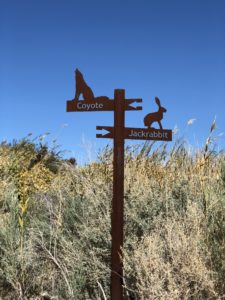Each country such as England, France, Spain, Mexico, Canada, etc offers their own travel opportunities but I have never traveled them, so I will restrict my information to the USA. Should I ever venture into those areas, I might add information on them also.
There are many facets to traveling around the USA. This section was developed for Nevada, but actually applies to the USA. You can travel by car, train, bus, motor home or motorcycle. Each offers it’s own opportunities, advantages and disadvantages. For example, bus and train you are restricted to their schedules and their specific routes. There are no chances to see a road side sign and suddenly alter your plans. However, they are doing the driving and also it is comparatively in expensive.
Motorcycle is certainly your most connected to the road experience, but unless you are an experienced rider long distance rider, you will have challenges on the open road for several days or longer. You are also more restricted on what you can take with you. Even with a towed behind the bike, there is limited capacity. Plus you are also more at the mercy of the weather. A combined option is to use a trailer behind a car, motorhome or other vehicle to haul your bike and use it for local exploring.
Traveling by car is the most common, most people have a car. The problems with cars, is that you are also restricted in the amount of stuff you can take, and depending on the number of people on the trip it can get a little crowded. Plus you are mostly restricted to be strapped into a seat with little movement allowed. Eating will generally be restricted to dining in restaurants or maybe cold sandwiches out of a cooler. Sleeping will also be mostly in motels, at friends or family or maybe camping out along the way. Camping out becomes challenging as few places allow camping except official camp grounds. And lets not forget about the weather factor. Cold, rainy, snowy or just down right bad weather can affect your plans. You might be forced to sleep in your car.
One useful class of 12V travel appliances are food warmers or chillers. Many can do either with the flip of a switch. They are not so much a food cooker but more of a keep it warm during the day, or keep it cool. Keeping it cool is useful when traveling as you do not have to deal with ice and the water afterwards for any food or drink you may have purchased along the way.
In the middle of the travel by your own transportation is to pull a travel trailer / camper. This does require you to have a sufficient tow vehicle to pull it. It solves some of the dining/food requirements and also the sleeping arrangements. However you are still restricted to the car/truck for time on the road. But once at a camp ground and set up, you can spend several day in home like comfort. Well at least homeish like comfort. Small used travel travel trailers can also be inexpensive to purchase depending on your needs for amenities including minimum number of beds, showers, generators for power, slideouts for extra space and over all size. The larger you go in size and/or amenities, the larger your price tag.
In addition to some space and accommodations advantages of the travel trailers as the ability to cook home style meals. Thanks to a variety of 12V DC appliances you can have the amenities of home with the ease of counter top cooking. This is also a major advantage motorhomes/RVs discussed next. There are 12V appliances for frying, slow cooking, making coffee and more. These could also be used – to a point – in a car, but really only if you are parked somewhere for a time frame.
At the upper end of the travel with your own vehicles is the motor home / RV. These start to fall into three categories. Here I will summarize the overall advantages and disadvantages. In another section I will discuss the details of each. There are three major classes of motorhomes and one class with two subclasses.
On the lower end of the classes, is the Class B. You might think it would be A or C, but you would be wrong. A Class B motor home originally was not much more then a passenger van/cargo van converted to having the basics of a small cooking area, a sleeping area and some comfortable seating, plus storage space for clothes and personal items. Class B’s over the years have grown to include larger units with many more features including small refrigerators, showers and potty facilities, build in generators, slide outs and extra sleeping places. Some smaller Class B units are no larger then a standard van/pick up and can be be parked in the same size parking areas.
Next up the size chart of motorhomes is Class C. This is likely the most common one seen on the roads today and is based on pickup or van chassis. Smoe Class C can be smaller then some Class B units. The larger Class B and the smaller Class C units are close to the same in features and amenities. Often but not as a rule is the Class C might be wider requiring more space to park. Larger Class C units are often used by retirees traveling full time.
The final and upper end motor home is the Class A. This is divided into two classes. The ‘Bus Style’ which body style is comparable to the a city bus where the nose is flat and the driver sits up high. And the diesel pusher. Also the nose is flat and the driver sits up high and the closests thing to these might be a Greyhound bus. These are powerful units and often are seen pulling cars or SUVs. Prices new for these units can start over $200,000 new and many times even used. They also make great retirement ‘homes’ for couples wishing to spend their golden years traveling.
Pictures below are provided by contributors or supporters of this website. If you are interested in sharing your pictures of Nevada, please drop us a note.

Courtesy S. Ward – Road signs for wildlife traffic control
